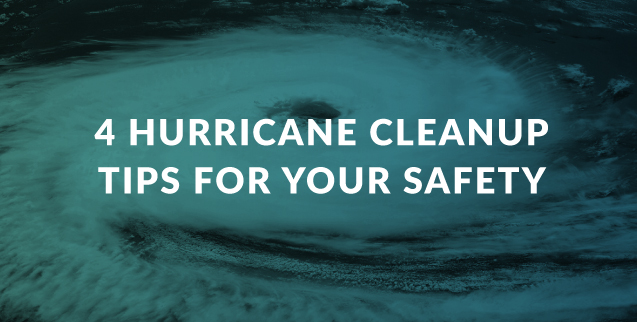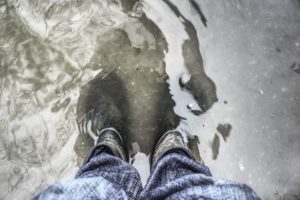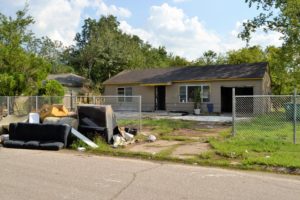
Follow these After-Hurricane Cleanup Tips to Stay Safe through the Aftermath of the Storm
Between the middle of August and the end of October, hurricane season is at its peak. What this means for Louisiana residents is that the threat of a hurricane making landfall along the coast is highly possible. While pre-hurricane preparation is important for minimizing damage to your home, post-hurricane cleanup and inspections are just as important for minimizing health risks.
Whether you evacuated to a safer location or stayed at home, there will still be cleanup procedures to follow in order to take care of the aftermath of the storm. To keep you and your family healthy and safe after a hurricane passes, minimize the following risks that often trail a storm.

Wear Protective Clothing Before Starting the Post-Hurricane Cleanup Process
Stormwater can carry contaminants such as parasites and bacteria from several sources. Overflowing ponds and sewage drains, as well as various debris swept in from the harsh rain and winds, can all contaminate water. To avoid any injuries or infections from the contaminated water or sharp debris, be sure you wear the following gear while cleaning up:
- Sturdy gloves
- Long pants
- Long-sleeved shirt
- Boots
-
Check for Standing Water or Water Damage Around Your Home
Inspect your home carefully to make sure there’s no water remaining inside. In the event you do find standing water in your home from the storm, use extreme caution before entering that room. If the water is high enough to reach any electrical outlets, avoid doing anything until your power is completely turned off.
To prevent any structural damage to your home, do not try to remove the water all at once. Your walls have absorbed a significant amount of water and trying to remove all the water at once could cause the foundation of your home to collapse. CLEAR Restoration provides 24/7 emergency services to protect the structure of your home caused by water damage.
-

Properly Disinfect or Dispose of Any Items Exposed to Storm Water
Avoid wasting time worrying about items that don’t matter such as outdoor furniture and instead focus on anything important that has been exposed to contaminated floodwater. Any items that can absorb water such as stuffed toys or food items should be disposed of.
Depending on the severity of the water damage on items such as couches and wooden items, they may be able to be dried and disinfected for future use. This part in the hurricane cleanup should be done as soon as possible to prevent any mold growth or diseases that could have come from the contaminated water.
-
Carefully Inspect Your Home’s Utilities for Hazards
One part of the hurricane cleanup process that is most commonly overlooked is your HVAC system. Even if your unit is still blowing cool air throughout your home, it does not mean it’s safe. Inspect your HVAC unit and look for damage caused by flying debris or high waters. While hazardous waste can be disposed of and water can be cleared out, a lasting concern is the possibility of mold growth.
Mold grows in dark, humid conditions and can spread within 24 hours of infestation. Your air ducts are the perfect place for mold to grow and can easily spread the spores quickly throughout your home. If you believe there is a chance that contaminated water or any other hazardous waste has gotten inside your air ducts, call a mold remediation company to inspect your air ducts for mold growth.
Stay safe this hurricane season and contact CLEAR Restoration for water removal and mold remediation services to help you with your hurricane cleanup efforts.



